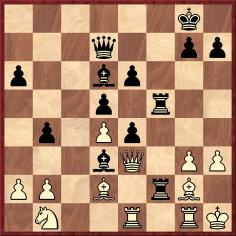I previously have quoted the famous chess aphorism attributed to the hypermodern chess grandmaster Aron Nimzowitsch back in 1927, the threat is stronger than the execution:
The sense is that one can wait for some time to play a strong chess move, letting the threat that it might happen create new advantages.
However, once the move is played the threat is gone and the move stands on its own merits. And, of course, the move is ‘committal’ – once played it can not be taken back.
Edward Winter, an extraordinary connoisseur of chess lore and history, looks at the origin of the expression here.
Oddly enough, the remark apparently did not refer to a move on the chess board but to the possibility that someone would smoke while playing chess, putting off his opponent. In other words, the very suggestion that one player might start to smoke was sufficient to rattle the opposition:
It is not possible to say when the story first appeared in print. After Alfred Brinckmann had related it in Deutsche Schachblätter in 1932, the BCM (page 307 of the July 1932 issue) accorded it 16 lines, stating that Nimzowitsch’s objection to tobacco smoke was well known but that ‘A. Brinckmann tells what is to us a new story in this connection’.
According to the Brinckmann version (New York, 1927, Vidmar, cigars), the Nimzowitsch punchline to the unnamed tournament director was ‘No, but he is threatening to smoke, and as an old player you must know that the threat is stronger than the execution’.
And there’s more (lots more): was Nimzowitsch the first to say it?
Here is the ‘immortal’ game Samisch v Nimzowitsch in 1923 in which Samisch gets totally entangled and within a mere 25 moves ends up in fatal ‘move-compulsion’ – zugzwang – a situation when any move of many available loses.
Play through the moves yourself and marvel at the position just before the end when Black is poised to play 25 … h6 :

Overwhelming threats. And a spectacular execution – by strangling.










